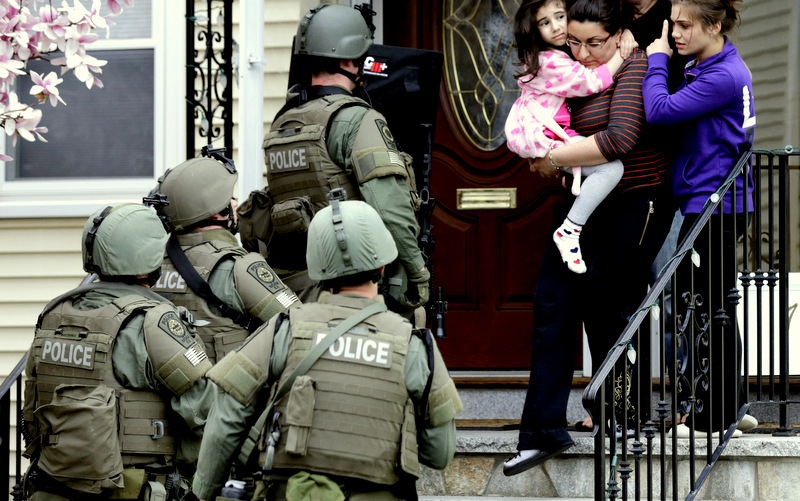
SWAT teams were designed to capture dangerous criminals, but unnecessary SWAT deployments are putting innocent lives at risk.
A new report from the American Civil Liberties Union compares U.S. police officers’ treatment of American citizens to the U.S. military’s treatment of the country’s enemies in 800 different instances.
In its report, “War Comes Home,” the ACLU determined that police departments throughout the U.S. are growing increasingly militarized.
State and local law enforcement agencies are unnecessarily employing military-grade weapons and tactics used in war zones to police American citizens — especially in communities of color — without first obtaining public permission or implementing any sort of oversight program. This is happening even though law enforcement agencies are supposed to use the minimum amount of force necessary and not violate the civil rights of any individual.
From 2011 to 2012, 50 percent of Americans affected by unnecessary SWAT deployments were black or Latino, according to the report, while whites were only affected about 20 percent of the time.
Of all SWAT deployments in that same year, 62 percent were for drug-related searches in which heavily armed SWAT teams, which often included 20 or more officers outfitted with assault rifles and grenades, served search warrants to homes.
Officers would sometimes use dangerous equipment such as flashbang grenades to temporarily blind and deafen residents before searching a home.
SWAT teams often conducted no-knock raids if the homeowner was suspected of possessing a weapon — even a legally-owned firearm. In these no-knock raids, officers broke down doors and smashed windows in order to enter homes. They screamed at the people inside, telling them to get on the floor, while often pointing weapons at the individuals, even when there were children present.
Due to the violent nature of the SWAT teams entrances, many innocent people were seriously hurt or even killed. For example, Tarika Wilson, 26, was holding her 14-month-old son when the SWAT team broke down the front door of her home and began shooting. Wilson’s son was shot, but survived, and she was fatally wounded in the officers’ search for her boyfriend, a suspected drug dealer.
Other victims who were not suspects included Eurie Stampe, 68, who was shot and killed while watching a baseball in his pajamas when a SWAT team entered his home, and 19-month-old Bounkham Phonesavanh, who was put into a medically induced coma after a flash grenade was thrown into his crib, piercing his cheek and chest and scarring his body with third-degree burns.
Although SWAT teams were designed to apprehend school shooters, hostage takers and escaped felons, 8 in 10 SWAT raids were initiated solely for the purpose of serving a search warrant. Only about 7 percent of the SWAT raids were “for hostage, barricade, or active shooter scenarios.”
As the ACLU reported, “Law enforcement agencies have become equipped to carry out these SWAT missions in part by federal programs such as the Department of Defense’s 1033 Program, the Department of Homeland Security’s grants to local law enforcement agencies, and the Department of Justice’s Edward Byrne Memorial Justice Assistance Grant (JAG) Program.”
In 36 percent of the SWAT raids, no contraband was found, but the ACLU noted that this figure may be closer to 65 percent, since there are incomplete police reports for a number of raids that produced nothing.
While the ACLU’s report is full of startling data proving the existence of an increasingly militarized law enforcement community throughout the U.S., the advocacy group ultimately concluded that the report was incomplete because “[d]ata collecting and reporting in the context of SWAT was at best sporadic and at worst virtually nonexistent.”
